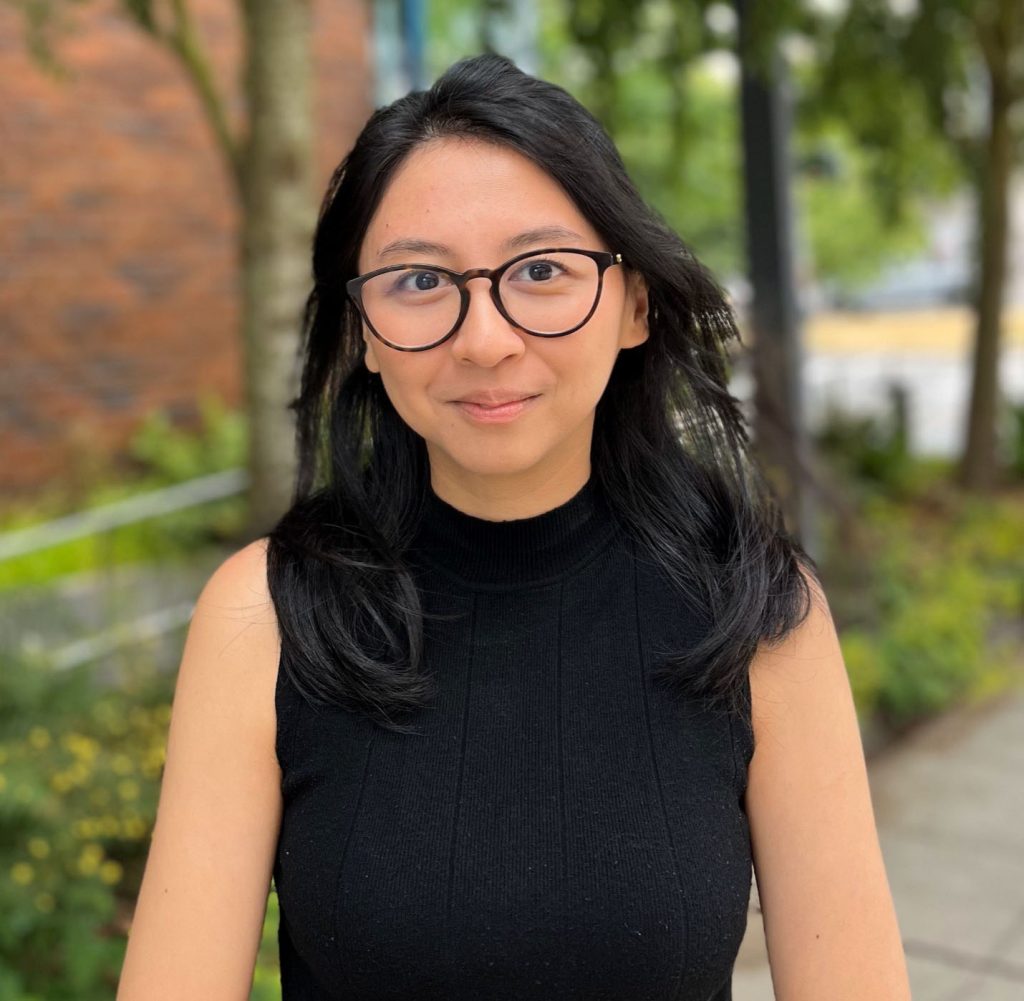Student Spotlight – Karisha Shahnaz Hariadi
Meet Karisha Shahnaz Hariadi, a graduate student and research assistant at CINTRAFOR. Karisha is passionate about finding ways to decarbonize the built environment. Here she shares her research interests, her experience at the Center and advice for future students.

What is your main research area?
I am exploring the environmental benefits and impacts of engineered wood products such as mass timber as a potential solution for decarbonizing the built environment sector. I am focusing on their application in the tropical regions, particularly in Indonesia. As one of the world’s largest tropical timber producers, Indonesia has the potential to develop a mass timber industry that could help meet its climate goals. But at the same time, challenges like land use change remain a significant concern for the country. To better understand these trade-offs, I use tools like Life Cycle Assessment to help ensure that efforts to decarbonize the built environment also support long-term forest sustainability.
Why did you choose CINTRAFOR?
When I applied to the Master’s program at SEFS, I was excited to learn about the many cool projects that CINTRAFOR worked on, including assessing the environmental and economic impacts of a biojet fuel project. This work, along with the specialized research topics at CINTRAFOR such as life cycle assessment, techno-economic analysis and supply chain modeling, strongly aligns with my interests. I believe these are essential tools for advancing bio-based innovations that can help address climate change. My advisors and lab mates have been a great source of inspiration. The collaborative nature of working alongside experts with diverse disciplinary backgrounds, industry partners, and other stakeholders on research projects offers countless opportunities to learn and grow.
What sparked your interest in your research area?
My interest in exploring decarbonization pathways for key emitting sectors began during my undergraduate studies when I took courses on global change and renewable energy taught by Dr. Matthew Grunstra (I hope you’re reading this, Dr. Grunstra!). Those classes strengthened my interest in climate solutions and motivated me to pursue a career as an environmental consultant. Over three years, I assessed the environmental impacts and supported the development of more than 15 renewable energy projects across Indonesia. As I continued to explore climate mitigation strategies, I was introduced to the concept of embodied carbon, which brought me to CINTRAFOR.
What contribution do you hope to make to your field?
One of the contributions I strive to make is to bridge the gap between research and practice. I want to make sure that the insights we gain through academic research are not only rigorous but also practical and accessible to policymakers, industry professionals and the general public. At CINTRAFOR, I see myself contributing to its mission of fostering cross-sector, international collaboration. With my background and experience in Indonesia, I hope to support efforts that connect academic work with stakeholders across disciplines and regions, especially in Southeast Asia, to help ensure that sustainable, science-based solutions are inclusive, context-aware, and actionable.
Describe a real-world research experience you have had.
For the mass timber research in Indonesia, I actively connected with government agencies and industry partners working to develop the sector. After steadily building the relationships, they agreed to support and collaborate on my Master’s research project. Together with my research advisor, Dr. Indroneil Ganguly, we visited plantations and surveyed sawmills and mass timber manufacturers across Indonesia. In summer 2024, CINTRAFOR was invited to a mass timber workshop hosted by Indonesia’s Ministry of Public Works and Housing, where I had the opportunity to participate as one of the speakers. The knowledge gained and the relationships built through this research experience have been truly invaluable.
What advice do you have for future applicants to CINTRAFOR?
My advice for future applicants is to stay curious. Take the initiative to connect with people, explore all the opportunities, and follow the paths that excite you because you never know where they might lead. CINTRAFOR is a space where your ideas, passions, and curiosity can truly grow. So trust yourself, ask questions and stay grounded in what matters most to you.
